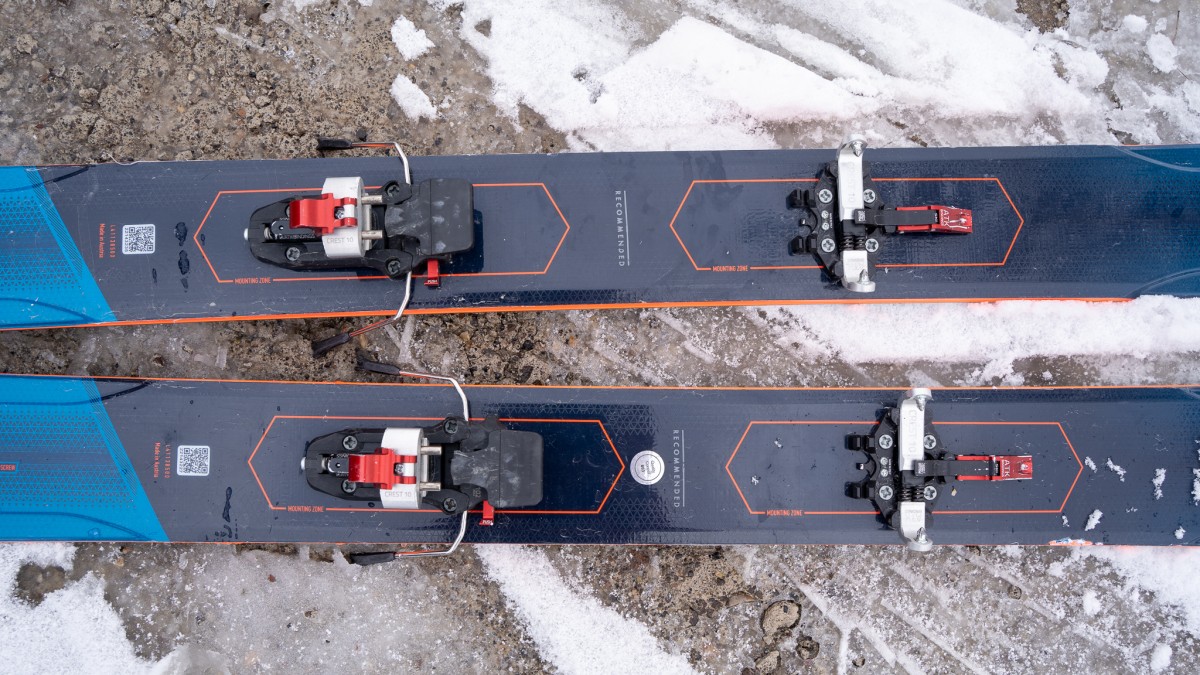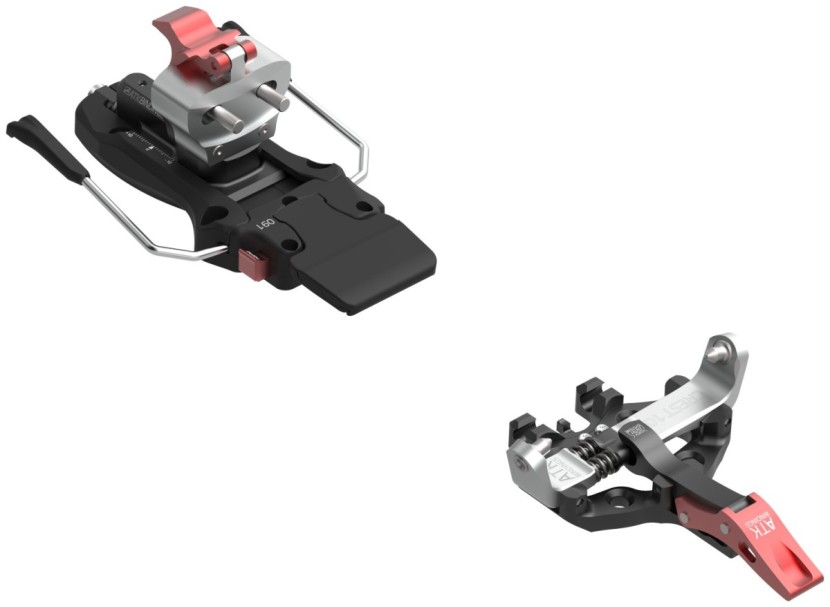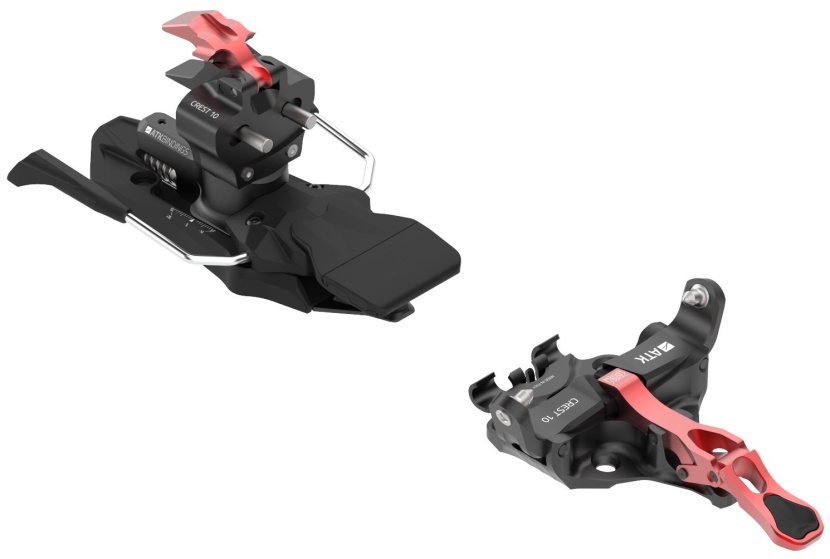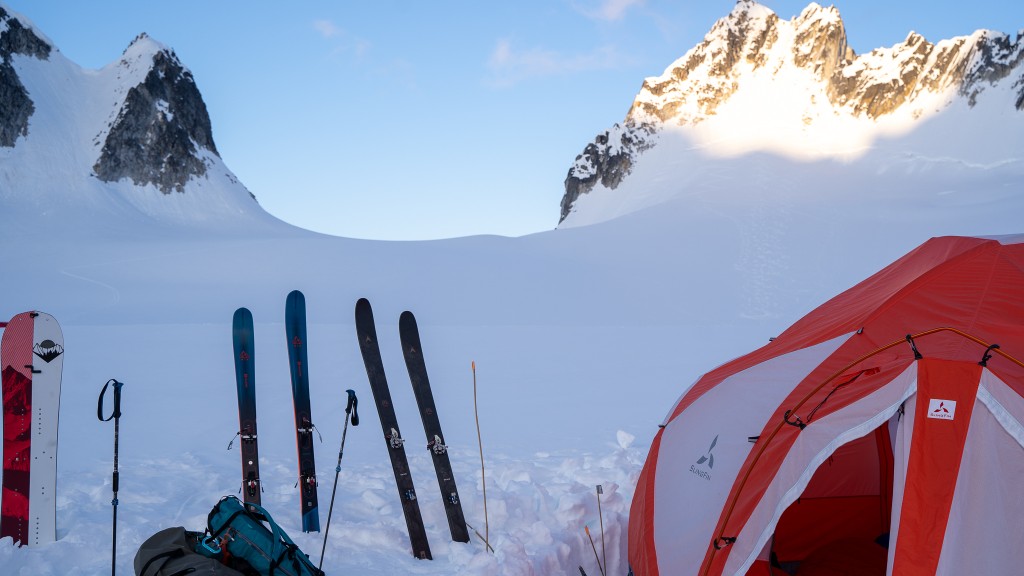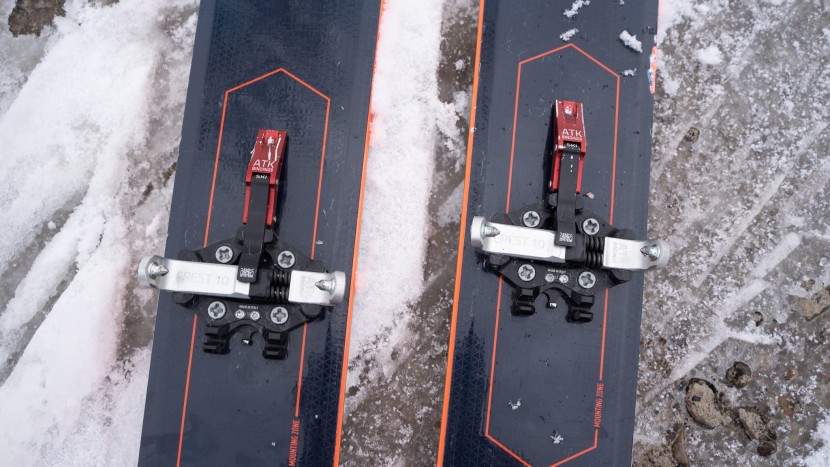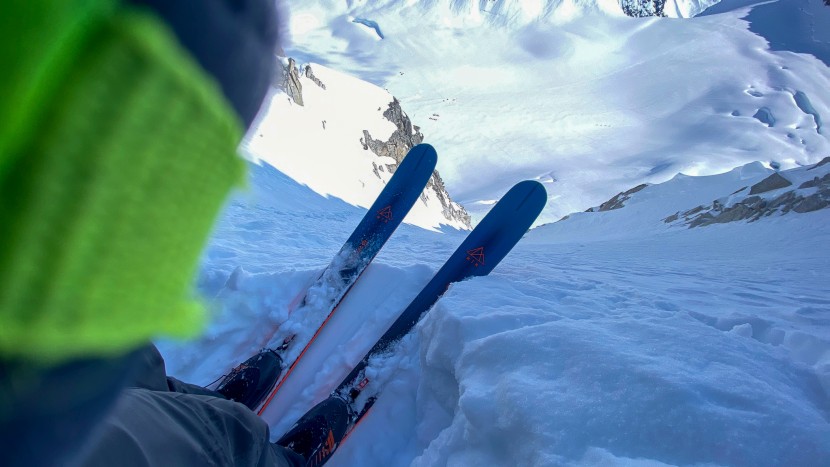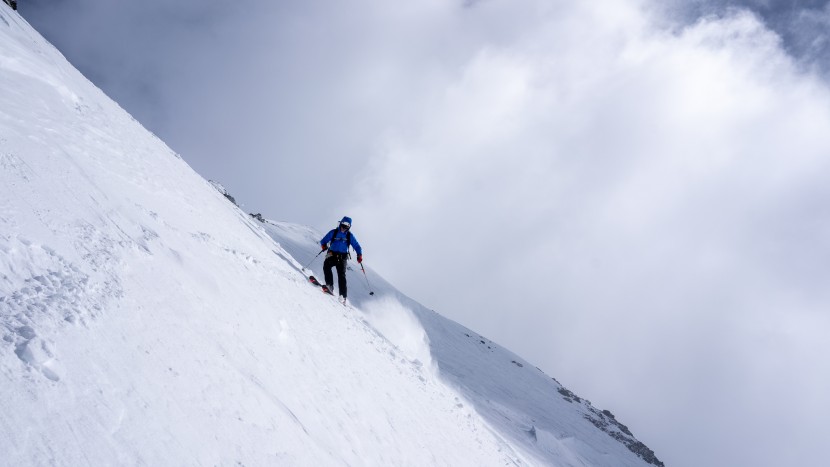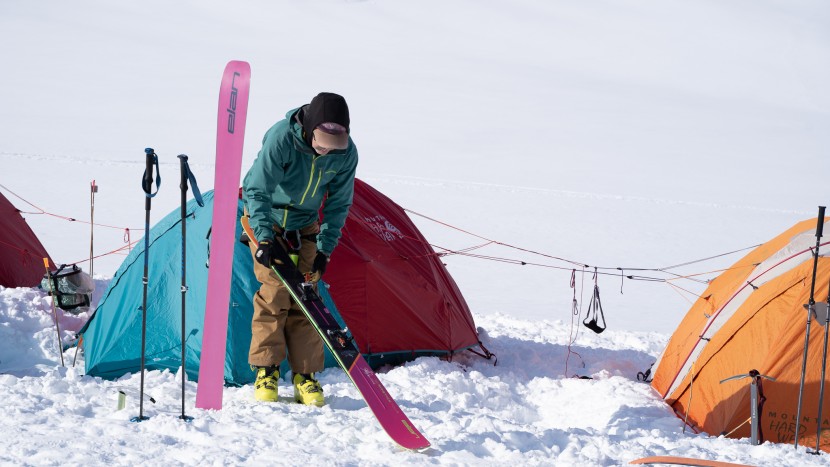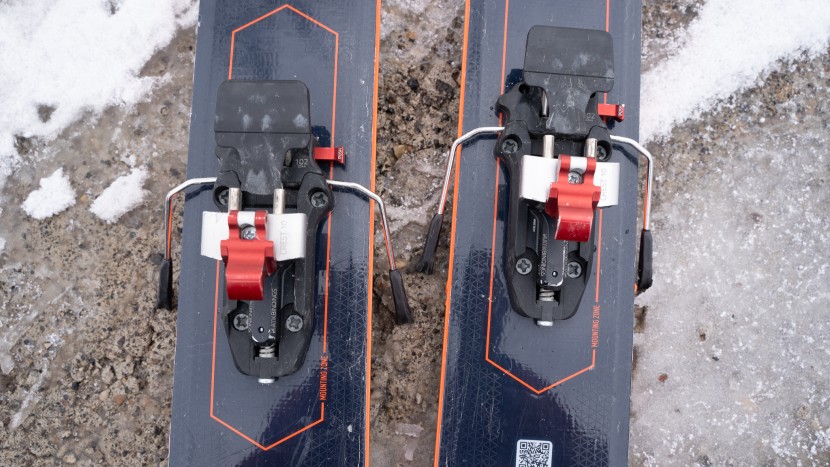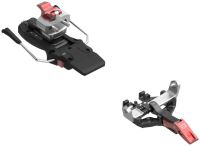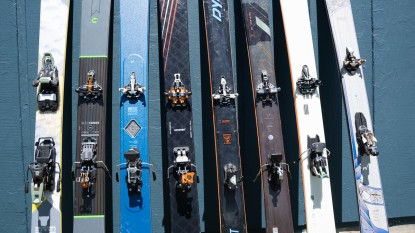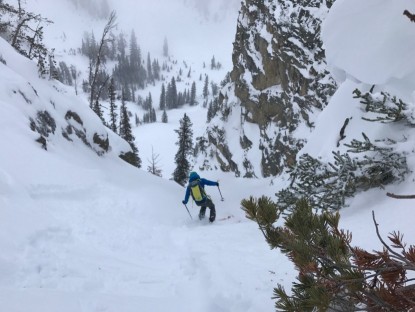
Our Verdict
Our Analysis and Test Results
Updated Binding
ATK overhauled the Crest 10 with a new brake system, two magnetic heel risers, and a new toe design (borrowed from the Raider SL series). While the information below pertains to the older version, we're linking to the newer, more readily available binding until we have the opportunity to test the new one thoroughly. Once we do, we'll update this review.
The ATK Crest 10 touring binding is a simple, no frills, lightweight binding with some of the more advanced features you might be looking for. We found them to be reliable, with brakes that work better than any other in this weight class.
Weight
One ATK Crest 10 Binding, as tested with a brake, weighs 306 grams. Notably, no other AT bindings in our test with brakes were even close to this weight. You have to add quite a bit of weight to get brakes that work as reliably as those on the Crest 10. You choose this binding as a light option with adjustable length and release value plus the functional brakes.
Downhill Performance
We look at binding geometry, power transfer, elasticity, and release values and characteristics. The major downhill-oriented geometry matters of the ATK Crest 10 are worth noting. Other reviews and manufacturers report binding geometry in various ways. We've found a method that is repeatable and relevant across a variety of bindings, boots, and boot sizes. Check out our How We Test article for further description of our stack height and delta measurements. The ATK has average stack height and greater than average binding delta. We measured a 12 millimeter difference between the height of the toe and heel pins. Your actual experience with this will depend on many other variables. Nonetheless, if you are confident that binding delta matters to you, note that the ATK Crest 10 has relatively high delta. Average in our review is just under 9mm.
In terms of other downhill performance attributes, the ATK Crest 10 is in line with other lightweight bindings. We like the adjustable release value. Few bindings that weigh this amount or less have adjustable release value. The release characteristics of this product are not certified by a third party. The heel piece is attached to its mounting plate with a spring. This gives that heel piece some theoretical “elasticity” as your ski flexes beneath your rigid boot. This heel piece spring travel appears in more and more bindings on the market, but our test team notices very little difference with it. Others, mainly those close affiliated with binding manufacturers in one way or another, cite this elasticity as crucial to backcountry ski performance. We haven't found an appreciable difference but we respect the theoretical underpinnings. It costs little to have that spring in your binding “in this day and age”.
The release value maxes out at 10. Most of our test team (that averages 5'10", 165 lbs, and excellent downhill ski technique) does just fine with this release value max. Many want higher release values, but few need them. Shop accordingly.
Touring Performance
With the ATK Crest 10 you get full toe piece range of motion, low profile construction that resists icing better than most, three heel elevation levels, and a toe piece that offers as rigid a connection as the bulk of the options out there. All these things are, generally, good things. You likely want all these attributes.
Let us look more closely at the heel risers. Yes, you get three levels; flat-on-ski, mid-height, and high height. Flat and high are the easiest to interchange. You just flip the lever; no heel rotation required. To get to the mid level you have to spin the whole heel piece and flip the lever again. All that effort gets you is about one less centimeter of elevation. We almost never found it worth the extra effort. Which is fine. Between the flat mode and this binding's version of “high mode”, you should be able to comfortably climb any skin track. The high mode isn't too high for normal skinning. It isn't as high as others, but that is ok; modern BC ski boots with great ankle articulation don't require a super high heel lifter.
Ease of Use
How about the transitions and adjustments of the ATK Crest 10? We commented briefly on the heel lifter transitions above. Heel lifter transitions and ski/walk mode transitions all require spinning the heel piece. There is a moderate amount of spring tension in that heel piece. You have to grab that whole heel piece with your whole hand to make the rotation. We couldn't figure out how to spin the heel piece with a ski pole. Few modern bindings can be spun with a ski pole. Getting in and out of the toe piece is about average. Locking that toe piece, similarly, is average. Stowing and deploying the brakes is pretty secure and clever, but requires a learning curve and full manipulation at every transition. Going from uphill to downhill mode can be done with one hand but going the other direction requires two hands. This is fine; other tasks in those respective transitions are commensurate in complication. Up to down transitions are always simpler than down to up.
Durability
We had no issues with the durability of the Crest 10. Nor have we heard of any other issues. This is a simple, sturdy binding.
Should You Buy the ATK Crest 10?
Yes. It is the lightest binding we know of with ski brakes. We can't quite call it “full function”, but it comes close. To us, “full function” touring bindings have ski brakes, three heel elevations, adjustable length, and adjustable release. The Crest 10 has all of these things, but the third heel elevation is essentially unusable and the length adjustment is shorter than most will want for using multiple boots.
What Other AT Bindings Should You Consider?
If you like the ultralight release adjustability of the ATK Crest 10 but don't need ski brakes, check out the ATK Haute Route 10. If you like the full functionality of the Crest but want more length adjustment range and better heel riser functionality, check out either the Atomic Backland Tour or Marker Alpinist. Both are just a little bit heavier than the Crest 10, and each of those has more adjustment range and better heel lifter configuration. The brakes on the Atomic and Marker are a little simpler to operate, also.
| Awards | |
|---|---|
| Price | $550 List Check Amazon (on sale!) |
Overall Score  |
|
| Star Rating | |
| Bottom Line | Slick, light, simple bindings with most of the features backcountry skiers are looking for |
| Pros | Light, nearly full function, clever ski brakes |
| Cons | Ski brakes require some fiddling, not all heel lifters are convenient |
| Rating Categories | ATK Crest 10 |
| Weight (35%) | |
| Downhill Performance (25%) | |
| Touring Performance (20%) | |
| Ease of Use (15%) | |
| Construction Quality (5%) | |
| Specifications | ATK Crest 10 |
| Weight of 1 binding and screws, lightest possible configuration (in grams) | 306 |
| Release Value Range | 5 to 10 |
| Brakes? | Integrated |
| Brake Width Options | 75, 86, 91, 97, 102, 108 mm |
| Weight of 2 bindings, common setup (pounds) | 1.35 |
| Weight of 2 bindings (in grams). Multiple options are noted where we have tested multiple options. | 612 |
| Stack height: average of toe and heel pin height (in mm) | 36 |
| Toe/heel delta: difference in height between heel pins and toe pins (in mm) | 12 |
| Meets ISO/DIN Standard? | No |
| Ski Crampon compatible? | Yes. "Standard" style. Not all crampons will be cross-compatible |


